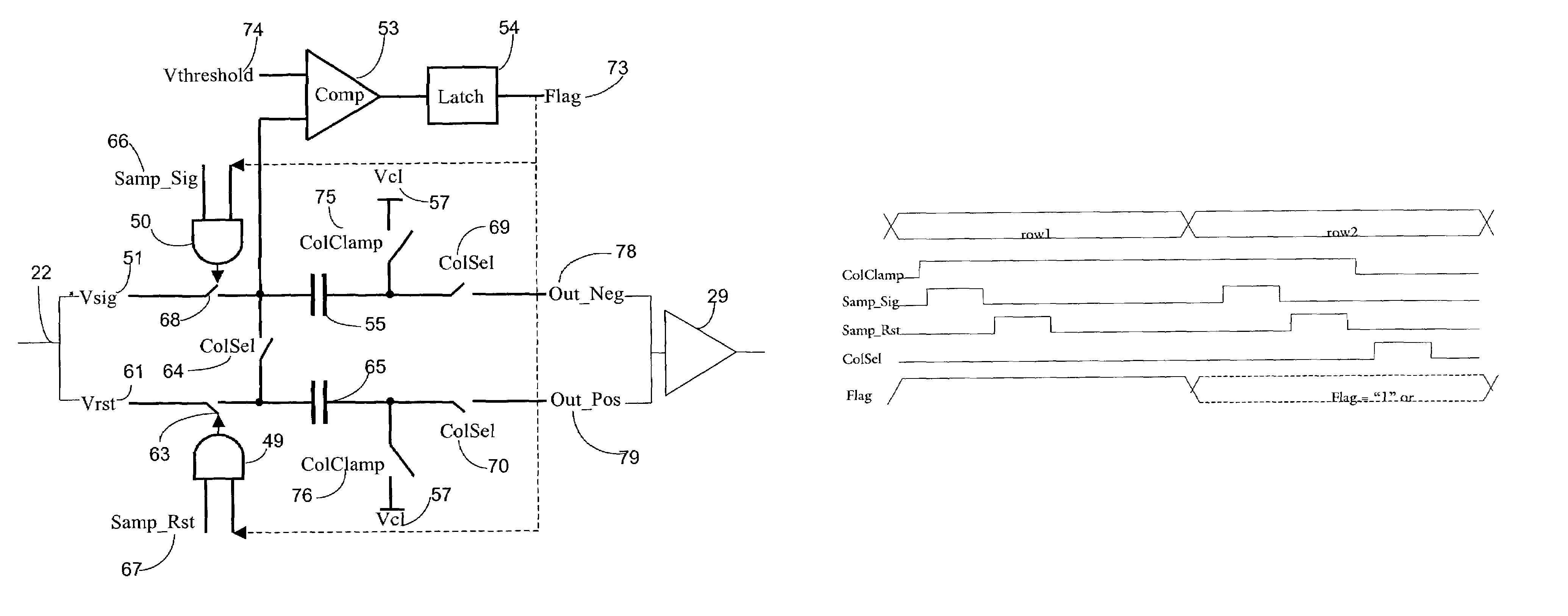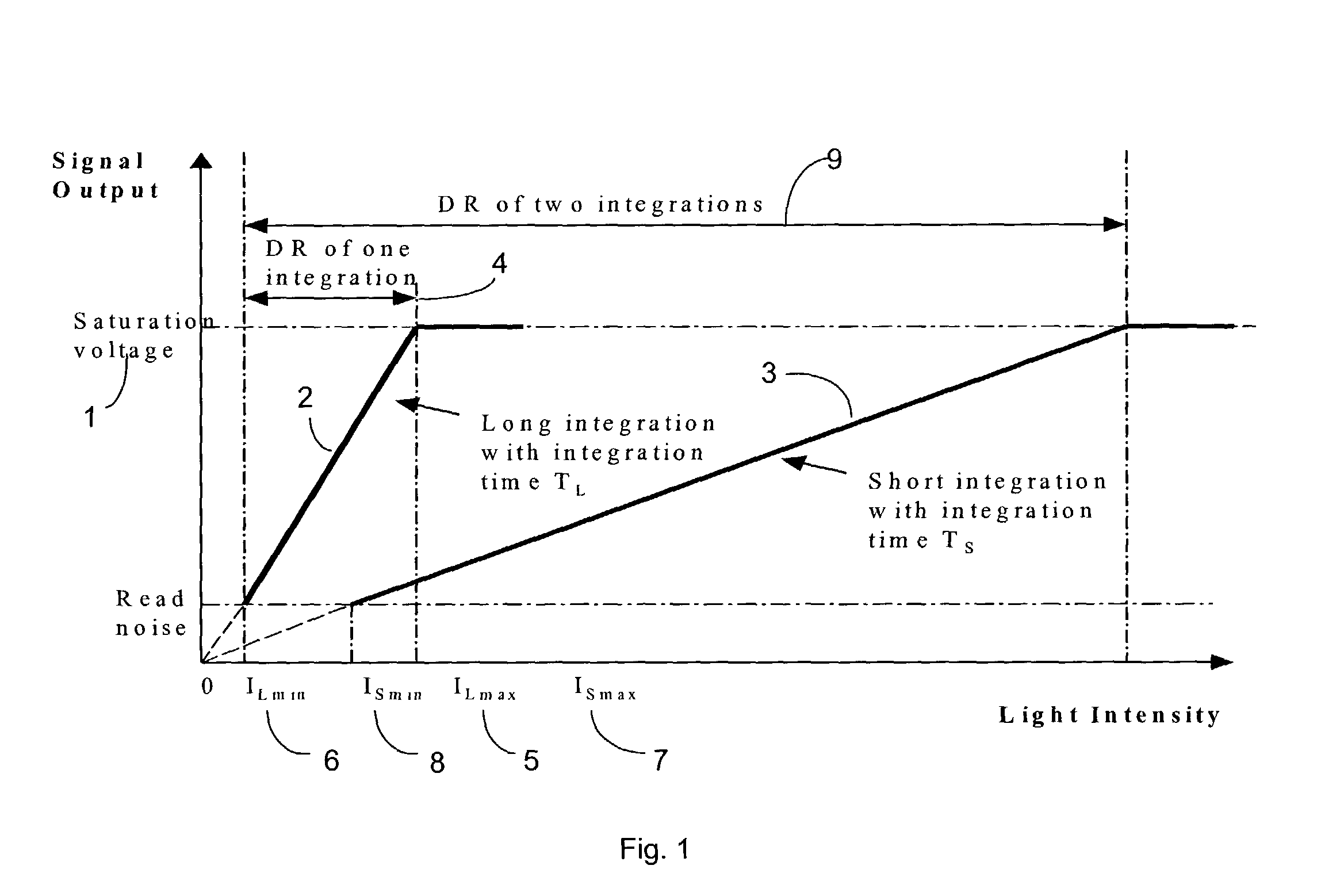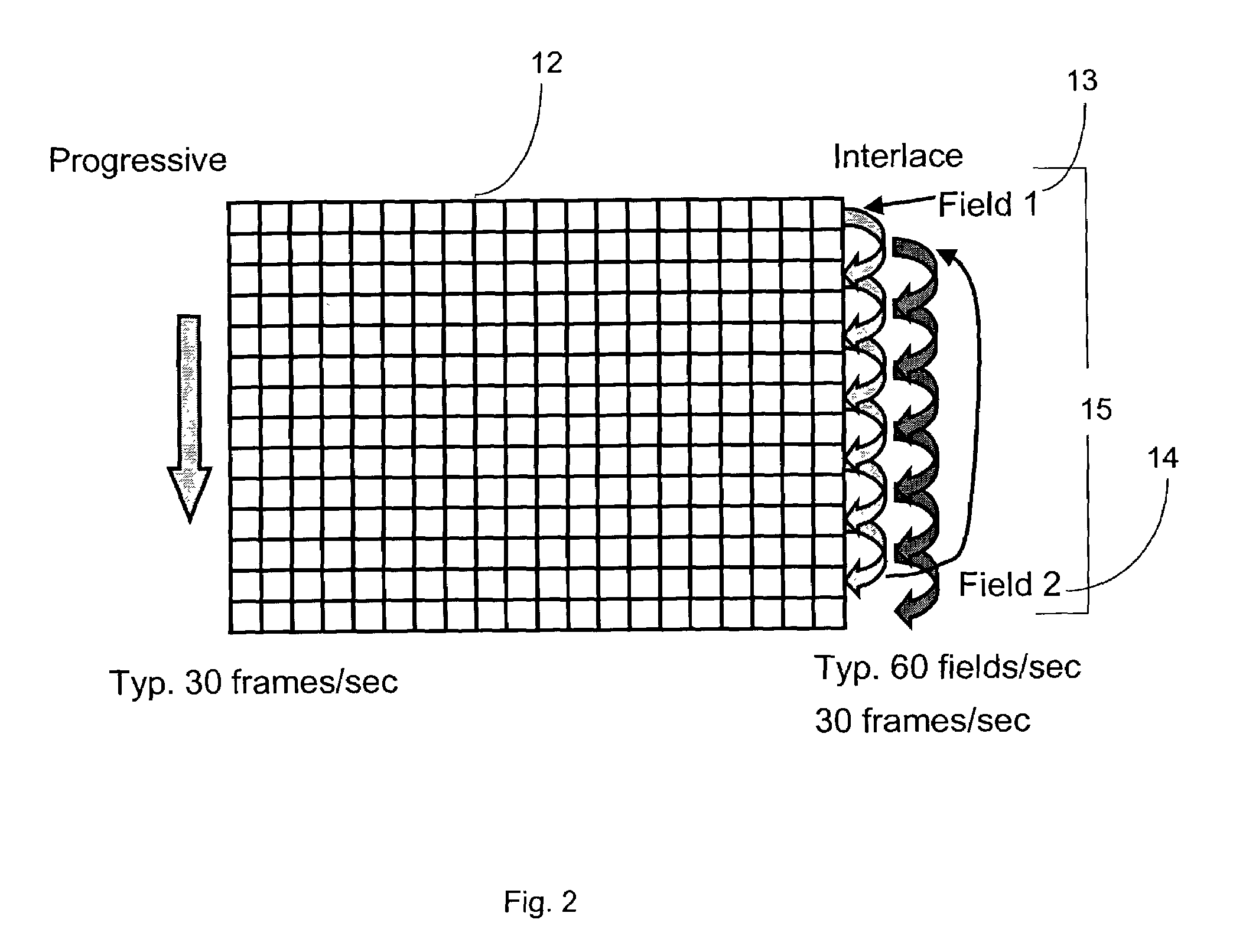High intrascene dynamic range NTSC and PAL imager
a dynamic range, high-intersect technology, applied in the field of improved semiconductor imaging devices, can solve the problems of slow response of the log portion of the circuit, fixed pattern noise, difficult control of the knee point in the linear-to-log transition,
- Summary
- Abstract
- Description
- Claims
- Application Information
AI Technical Summary
Problems solved by technology
Method used
Image
Examples
Embodiment Construction
[0035]Conventional interlaced NTSC or PAL image sensors perform imaging in two field captures at two time periods. Performing NTSC or PAL compatible image capture using progressive scan style with dual sampling requires another approach. For example, referring to FIG. 3, samples with different integration time can be taken from two adjacent odd and even rows to produce each field of an NTSC and PAL image sensor so that high intrascene dynamic range is achieved with minimized circuitry. A fusion algorithm can then be used to produce progressive style output using image signals from adjacent rows of pixels where the pixels of odd and even rows have different integration times.
[0036]Referring to FIG. 3, integration can be performed within a pixel array 12 where odd rows (e.g., 16, 18, 20) of pixels and even rows (e.g., 17, 19, 21) of pixels have different integration periods. In an exemplary embodiment, odd row pixels have a longer integration period, Tlong, which commences first to pr...
PUM
 Login to View More
Login to View More Abstract
Description
Claims
Application Information
 Login to View More
Login to View More - R&D
- Intellectual Property
- Life Sciences
- Materials
- Tech Scout
- Unparalleled Data Quality
- Higher Quality Content
- 60% Fewer Hallucinations
Browse by: Latest US Patents, China's latest patents, Technical Efficacy Thesaurus, Application Domain, Technology Topic, Popular Technical Reports.
© 2025 PatSnap. All rights reserved.Legal|Privacy policy|Modern Slavery Act Transparency Statement|Sitemap|About US| Contact US: help@patsnap.com



